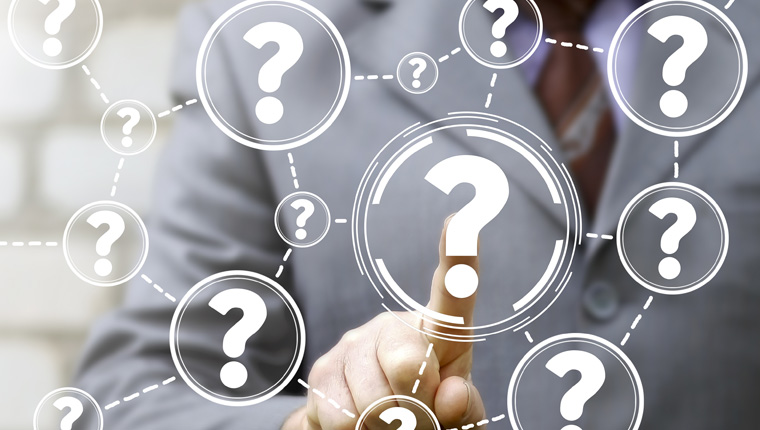Making Mobile Learning a Reality with Flash to HTML5 Conversion!

“New open standards created in the mobile era, such as HTML5, will win on mobile devices”
– Steve Jobs (Thoughts on Flash)
Today, HTML5 is making mobile learning a reality! And Flash to HTML5 conversion is the way to make it happen. HTML5 – the new alternative – makes up for all the shortcomings of Flash which was the most popular software for L&D professionals for over two decades until it lost relevance with the new learning demands and trends that came up.
→ Download Now: Rapid eLearning — The 4 Rs for Corporate Training Success
Flash to HTML5 Conversion
What’s in store for mobile learning? Mobile learning is one of the trends that will change the workplace forever. But, with Flash-based eLearning courses, mobile learning is just a dream. Here’s why Flash to HTML5 conversion is a must for kick-starting mobile learning!
- Multi-device compatibility
- Cross-browser compatibility
- Uninterrupted learning experiences
- No plugins needed
Flash phase-out – what will be its impact? Sign up for a free webinar to find all your answers!
But Why Bother about Mobile Learning?
On one hand, according to a study by Google, 80% of the population use smartphones and 57% use multiple devices of various screen sizes. On the other hand, T+D Magazine has presented mobile learning as one of the six trends that will change the workplace forever in an era where advancements in technology are revolutionizing training. Again, by 2020, mobile learning is estimated to be a $70 billion global industry (GSMA & McKinsey).
The increasing popularity of mobile learning in the fast paced era of “screenagers” has made it necessary for organizations to make their eLearning courses multi-device compatible and available to learners at their fingertips, anytime and anywhere without any hassles.
Shortcomings of Flash Which Make It Unfit for Mobile Learning
Incompatibility with Mobile Devices
Flash was designed for desktops and not mobile devices with touchscreens. For instance, many Flash websites contain rollovers which show information when the cursor is hovered over them. But in mobile devices with a touch screen interface, there is no feature that supports roll overs. Flash-based websites or even your Flash-based eLearning courses are not compatible with mobile devices– making them unfit for uninterrupted learning experiences in the mobile-fast times.
Varied Compatibility with Different Browsers
Steve Jobs’ announcement of the end of Apple’s relationship with Adobe Flash in 2010 had a domino effect with Google, Microsoft, and Mozilla following suit. Adobe then announced that they would be ending support to Flash by the end of 2020. This means that come the end of 2020, Flash-based eLearning courses will no longer run on these browsers. Flash-based eLearning courses will also not work in most operating systems such as iOS, Windows, and Android after the end of 2020.
Higher Battery Usage and Longer Processing Time
Flash-based eLearning courses are also not suited for mobile learning because they drain the battery of the device and have a longer processing time.For instance, videos are an important part of present day eLearning courses. Most modern day devices use chips with the H.246 decoder that can play up to 10 hours. This decoder has also been adopted by giants such as Apple, Google, and Netflix. Flash on the other hand, uses an older generation decoder which runs in the software leading to high battery usage.
E-learning courses in the form of microlearning modules are becoming more and more popular in digital corporate training with the increasing popularity of mLearning. Under such circumstances, Flash-based courses which are longer in duration are losing relevance.
How would Flash to HTML5 Conversion Help?
Although Flash will become obsolete by the end of 2020, for over two decades it was the most popular software for the designing of courses and animations with innovative content and high interactivity. There still remain a number of Flash-based courses that are relevant and have not become obsolete. Such courses need to be salvaged.
Recreating such courses from scratch will require a lot of resources and will also be very expensive. This is where the conversion of Flash-based courses to HTML5 comes in. Besides overcoming the shortcomings of Flash, HTML5 offers additional features which make it the perfect choice for making mobile learning a reality after and beyond Flash.
Let’s look at some benefits of Flash to HTML5 conversion for mobile learning
Multi-device Compatibility
Courses developed with HTML5 can be accessed on any mobile device, anywhere and anytime, making information available at learners’ fingertips. A research report by Global Market Insights says that the BYOD (Bring Your Own Device) market size would grow up to $367 billion by 2022 from a mere $30 billion in 2014. This means that soon most companies would be adopting the BYOD policy for their employees. It then becomes all the more imperative for companies to convert their already available Flash-based courses to HTML5 to ensure uninterrupted mobile learning in today’s fast world.

Have You Met the 4 Rs of Rapid eLearning?
Accelerate Learning and Maximize its Impact With the 4 Rs of Rapid eLearning!
4Rs of rapid eLearning:
- Redesign
- Record
- Rebuild
- Republish
Cross Browser Compatibility
HTML5, being an open web standard, is compatible with the latest versions of browsers such as Google Chrome, Safari, Internet Explorer, and Mozilla Firefox. Flash-based courses, after being converted to HTML5, can run on almost all browsers including the ones incompatible with Flash.
Uninterrupted Learning Experiences
HTML5 allows accessing eLearning courses online and saving them for offline learning too – offering data storage features for uninterrupted learning experiences in the truest sense. HTML5 does not have the issues of higher battery usage and longer processing time faced with Flash. Converting lengthy Flash-based courses into microlearning modules in HTML5makes the content relevant in an avatar that is more suited for modern learners in the current times.
No Plug-ins Needed
HTML5 does not have to rely on third-party plug-ins as it uses an open source markup language. Hence, it easily supports audio and video elements without the need for any extra plugins, enabling a smooth learning experience.
You can also take this opportunity of Flash to HTML conversion to update legacy courses. The latest authoring tools can be used to include different interactivities and audio and video elements, thus making courses more engaging for mobile learning. For instance, HTML5 supports the adoption of gamification, game-based learning, social learning, and many other eLearning strategies much easier. It also makes learning-on-the-go through responsive design possible.
Wrapping it Up!
Flash’s impending phase out at the end of 2020 and the ever-increasing popularity of mobile learning make the conversion of the Flash based courses to HTML5 a high priority for training managers. And thanks to the various authoring tools, the conversion process has become much smoother.
If you want to know more about Flash to HTML5 conversion, download our free eBook!





